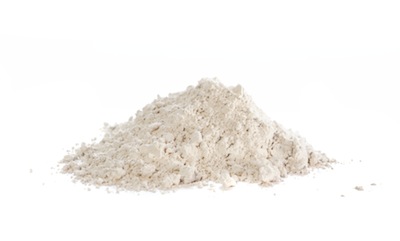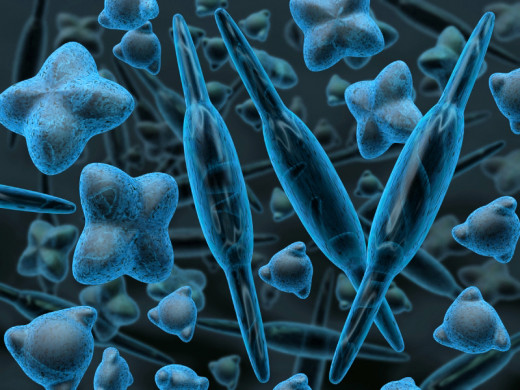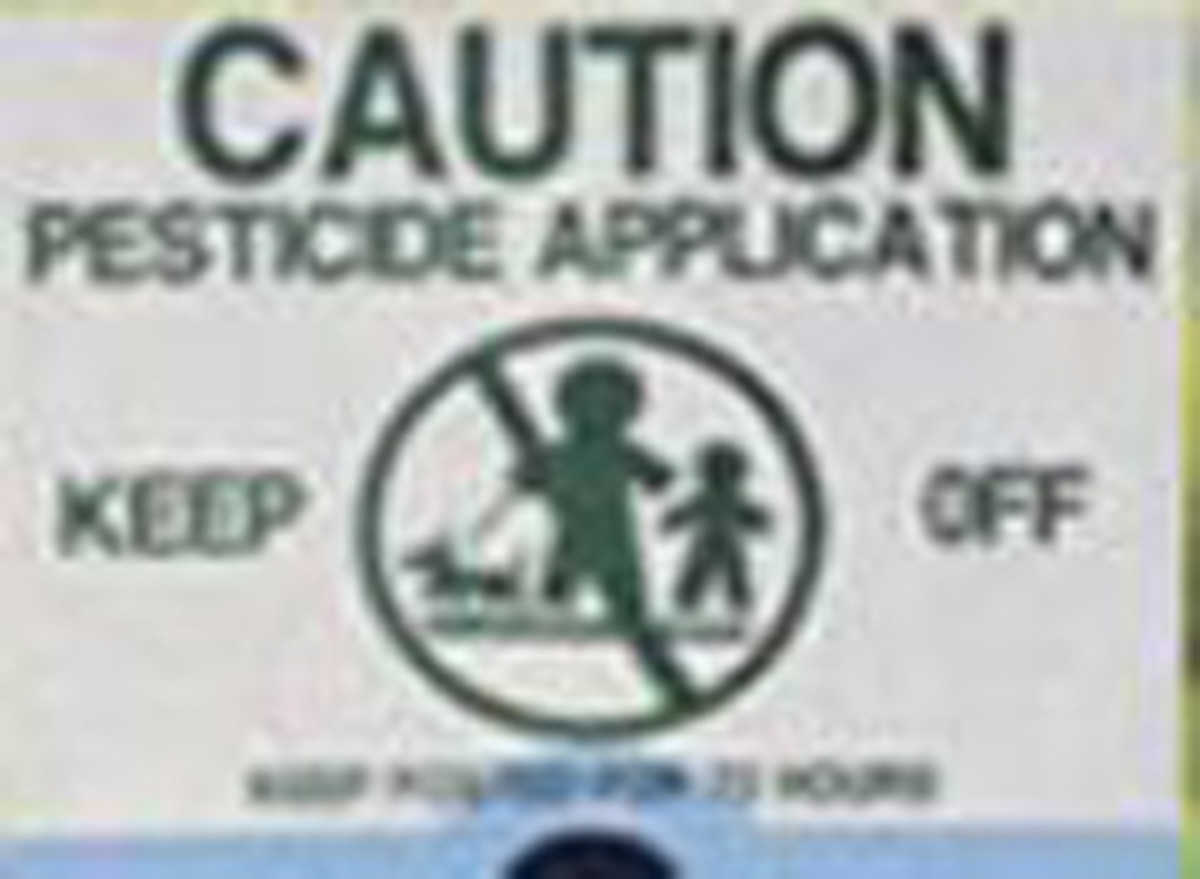Food Grade Diatomaceous Earth
What is Diatomaceous Earth?
Diatomaceous Earth is a naturally occurring freshwater sediment. It is a white crumbly rock, that is broken down into a very fine white powder with the consistency of normal flour, DE is known as 'diatomite' in industrial terms. Food Grade Diatomaceous Earth has many amazing uses, including benefits for gardening, pets, home uses, and even people are now starting to consume it to dramatically improve 'hard to address' health problems.
Currently, not a lot of people know about food grade diatomaceous earth. It's hard to believe with all the things it can do, literally replacing so many household chemical products in an instant, that it isn't more well known. However, this is changing as people discover its power to improve health, including mental health when it comes to getting rid of something like cockroaches or bed bugs!
This Hub is going to give you a solid look at all the ways you can use Diatomaceous Earth (food grade uses only), so please leave comments if I missed anything!

Diatomaceous Earth for Gardening
Diatomaceous Earth, otherwise known as DE to avoid the tongue twister... is best known for its ability to get rid of unwanted bugs and insects that get in the way of a healthy garden. The way that DE can eliminate bugs in your garden is by dehydration. I want to say this first because often when we think of killing living things in our garden, it raises health concerns that an insecticide could get into our veggies and in turn we will be eating something that might not be so good for our health.
Thankfully, food grade diatomaceous earth is 100% Non-Toxic which guarantees that no one is going to have any risks if DE is consumed. In fact, people are eating food grade diatomaceous earth for other amazing health benefits, but I will discuss that later on in another subsection.
The Diatomaceous powder is actually made up of millions of tiny particles of diatom shells. Diatoms are single celled creatures that live in fresh water environments. Typically we could call diatoms 'phytoplankton' to make things easier to understand, and diatoms are actually the most common type of phytoplankton from prehistoric times to the present day.
Diatomaceous earth is actually fossilized phytoplankton, so now the shells are dry and sharp, but incredibly tiny and microscopic. What happens is the particles come in contact with bugs and insects and lacerate the exoskeletons, causing the bugs to lose water and dry up over a few days. This means that there is no way for any kind of bug to become immune... As many gardeners know, by using chemical insecticides we are only influencing the insects and pests to adapt and become 'super bugs' as we have heard before.
Spreading the DE over your plants and veggies by 'poofing' it usually works best. As long as a thin layer of the powder is on your garden wherever the bugs are going to walk through it or come in contact, it is sure to start working right away. Another way to distribute and apply the DE is to mix it in water, and they spray the mixture over your garden so that when it dries up there will be a thin layer of the DE dust stuck to the plants. Remember, as long as the bugs touch the DE, it starts to dehydrate them right away.

Diatomaceous Earth for Pets
The next most popular known use for food grade diatomaceous earth is for pets and animals. Originally, DE was certified as an 'anti-caking' agent to be used on farms. The DE was added to livestock food in order to prevent molding or unwanted moisture, and as well DE was added to the living areas of farm animals to cut down on other health problems that come from too much moisture.
Interestingly enough, after the DE was added to the livestock food supply, farmers started to notice other health benefits that the animals were experiencing as a result of eating food grade diatomaceous earth. One thing is that the hair/fur of the animals became shinier and fuller, and also their teeth and nails strength improved, but beyond these factors is the way DE removes parasites from within inside the animal, as well as it keeps the digestive tract clear and clean.
So it logically follows that food grade DE would be used to de-worm pets, like dogs and cats. To buy a 'de-wormer' medication from the Vet is never going to be cheap, but feeding your dog or cat food grade DE over a month is going to have an even better affect and at a fraction of the cost! Just like livestock, dogs and cats are benefiting from healthier coats of fur, and being completely free from internal parasites. Especially if you have a pet that lives outside, DE is essential to ensure that your pet is not contracting unwanted parasites.
So what about Fleas and Ticks? This is the next amazing use of food grade diatomaceous earth that I want to outline here in this hub. Fleas can populate fast, if you have many animals, there are going to be that many more fleas and that much faster. A flea infestation is bad enough, and especially if it gets to the point where it affects the family too. Ticks are not as plentiful, but there are much greater health risks associated with ticks, like the transference of Lime Disease, which typically there is no available treatment if the disease is contracted by people.
To get rid of ticks and fleas is super easy with food grade DE. Before explaining the process, I just want to stress first that YOU MUST USE FOOD GRADE DE, please never use the kind of diatomaceous earth that is not food grade (the other kind is harmful and is used in factories, not on farms and gardens).
Spread the DE evenly in your pets fur by dusting them lightly. Remember, you don't need a lot, just get the powder everywhere that a flea or tick might live. Especially dusting around the bed or sleeping area of the pet works great to block the fleas or ticks before they spread to more territory. Keep the DE out of your pets eyes, but its not toxic remember, so everything can be simply washed off or brushed off if you get it somewhere that you don't want it. After a few days time, the ticks and fleas will start to dry up and die off... leaving you and your pets free from pesky fleas and ticks!

Diatomaceous Earth for Bed Bugs!
This is one of the most revolutionary uses of food grade diatomaceous earth, largley because of the intensely terrible affect that bed bugs have on a persons health, home, and mental health too. The same way that DE can be used to kill off bed bugs, it works the same way to eliminate other household infestation of other insects like cockroaches, ants, spiders, or house centipedes: remember, anything with an exoskeleton will be quickly dehydrated by the DE!
To get rid of bed bugs you need to be able to distribute the DE over a thin layer, everywhere that the bed bugs could live, walk, crawl, or be in contact with. It can be a rather detailed process which I won't go into here, but generally speaking its quite simple.
What helps is to put the DE into something like an empty dish soap container so that you can 'poof' the dust, that way there are millions of particles creating a thin layer of exposure to the terrible little bed bugs. Put it on your mattress, bed frame, box spring, all around your bed, in the carpets, along edges of the walls, and any dark spaces or cracks that the bed bugs could be living during the day or when there is light. Remember that bed bugs come out when its dark, so have the DE absolutely everywhere if possible.
To kill any other household insect, follow the same general guidelines to make sure the bugs are exposed to DE, 'poofing' the diatomaceous earth into all the cracks and nooks possible. Again, it MUST be FOOD GRADE diatomaceous earth, or you are taking a very big health risk!

Diatomaceous Earth for People
And last but not least, I will discuss some of the ways people are using Diatomaceous Earth (again, only Food Grade please!) to improve their health and lifestyle.
Eating Diatomaceous Earth
The best way to get DE into your diet is by mixing about a teaspoon of it into a glass of water and drinking it down. It's tasteless and kind of starts to taste good after you get used to it. I take it daily, and have heard that about 1 teaspoon for every 100 pounds of body mass is a good measure to know how much to take. Also, taking this twice daily on an empty stomach works best. Eating Food Grade DE doesn't necessarily add something to your diet (other than silica which you'll notice it improve your hair and nail strength right away) as much as it's health benefits revolve around what it can remove from your diet...
Adding DE into your regular daily diet means that it will:
- Lower your cholesterol
- Remove parasites
- Detox from heavy metals stuck in your cells
- Clear out blocked areas of your intestines
- Give a positive ionic charge to your body (feels like an energy lift)
- Makes your body alkaline (all disease requires an acidic environment, by keeping your body alkaline you prevent almost all kinds of disease, especially cancer).
- Lower blood pressure
People who are more connected to the agricultural industry have been eating DE in their diets for over 20 years, but its only now that Diatomaceous Earth has become more available, even ordering it online in smaller packages so that you don't have to buy it in bulk from farmers in the middle of nowhere.
Without further adue, stay tuned for more hubs about Diatomaceous Earth and remember to always stick with food grade and stay away from anything else! Leave comments if I missed anything ;)



